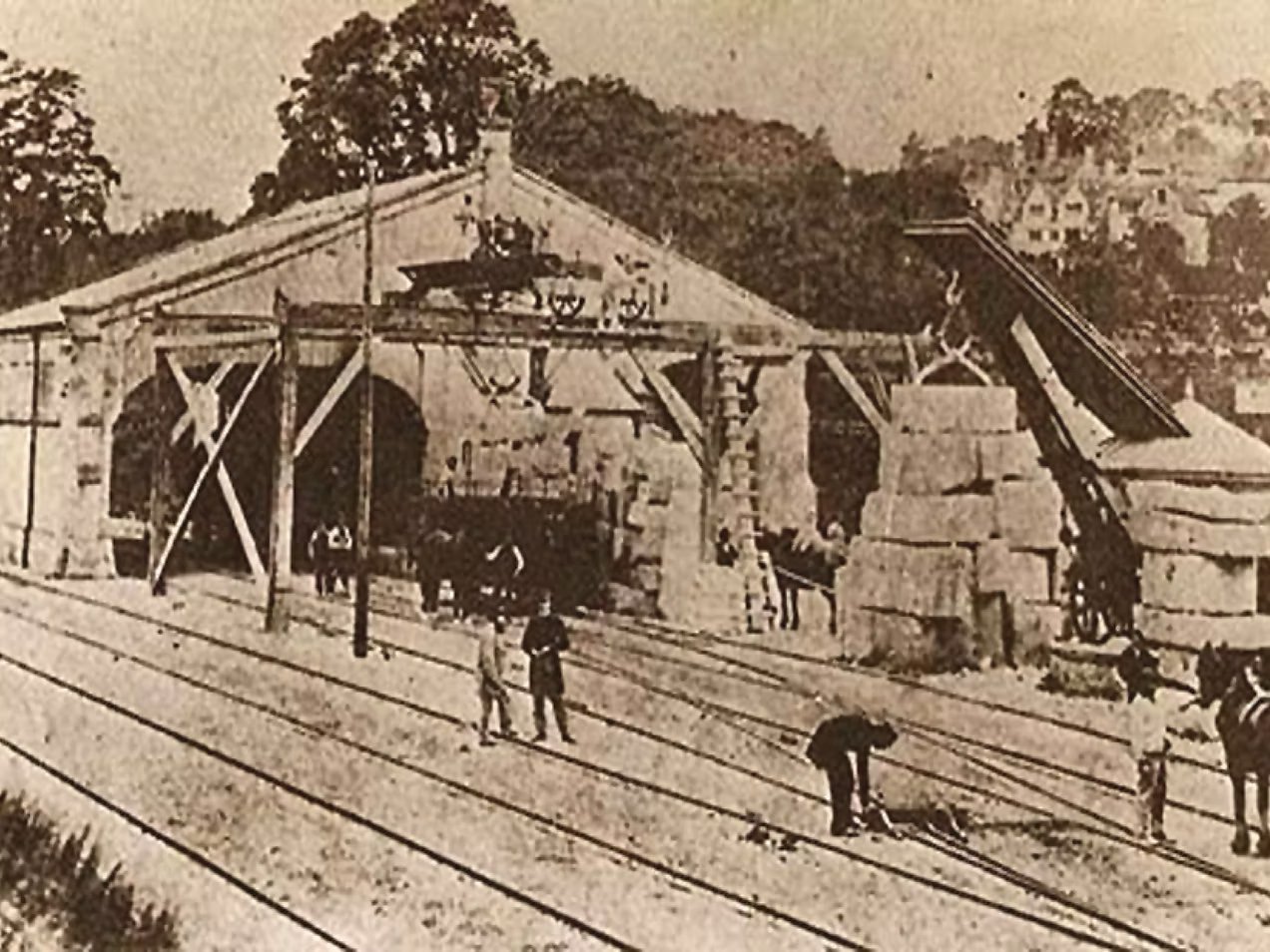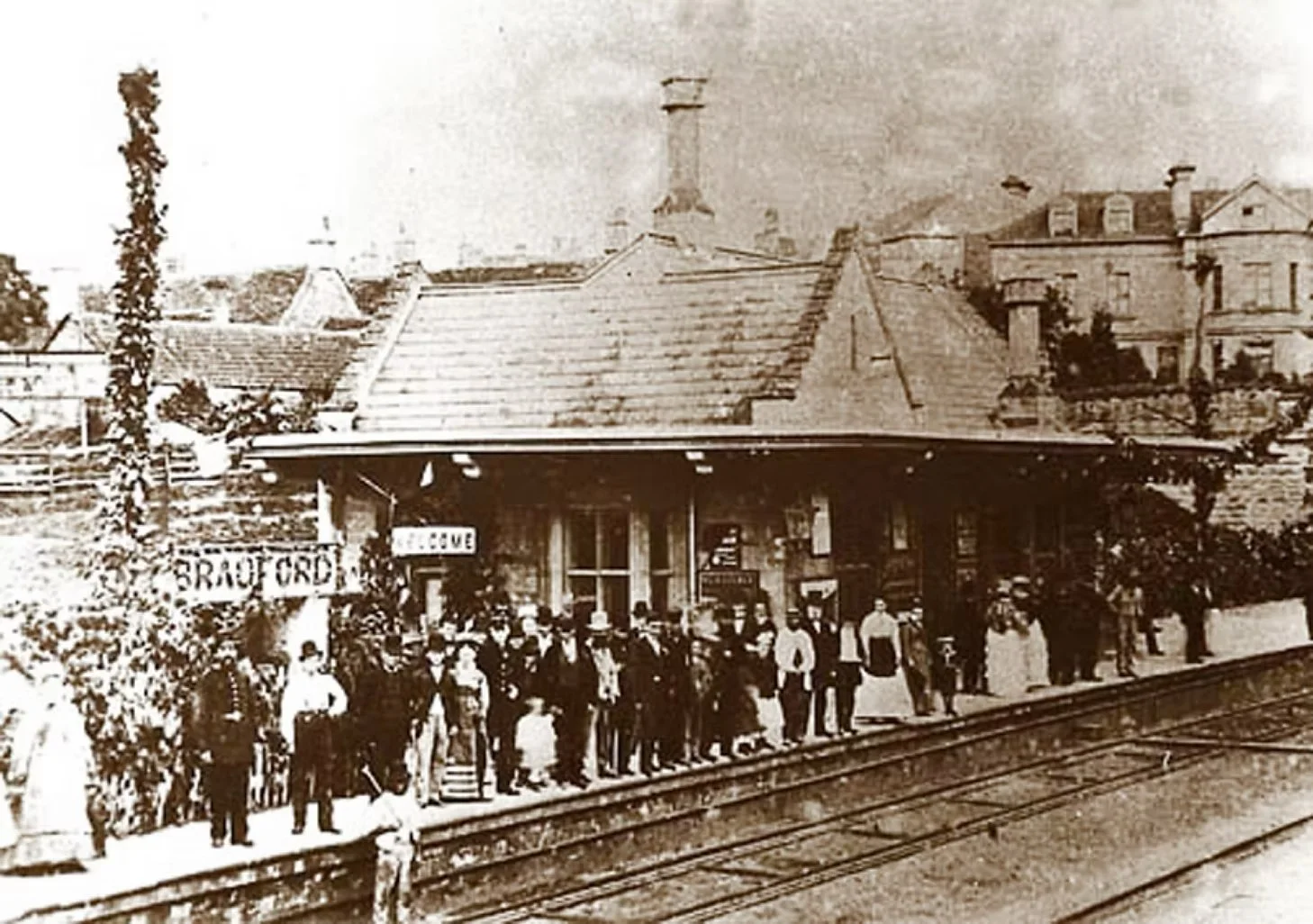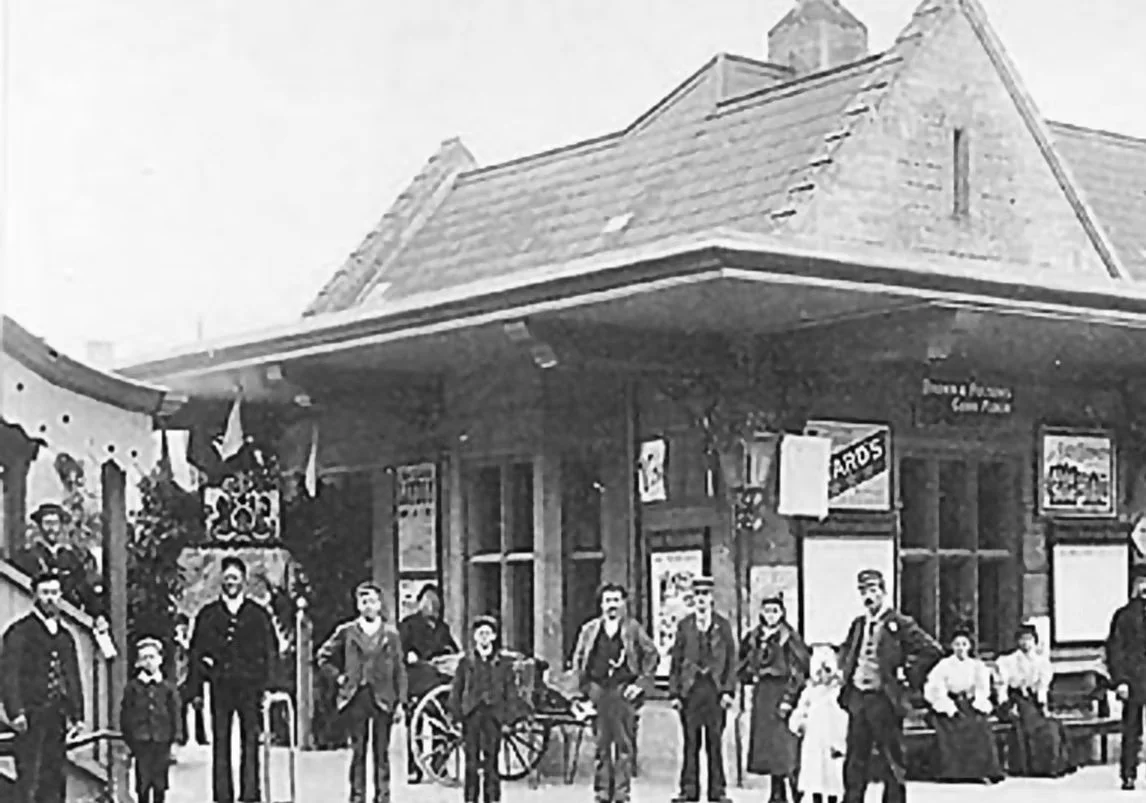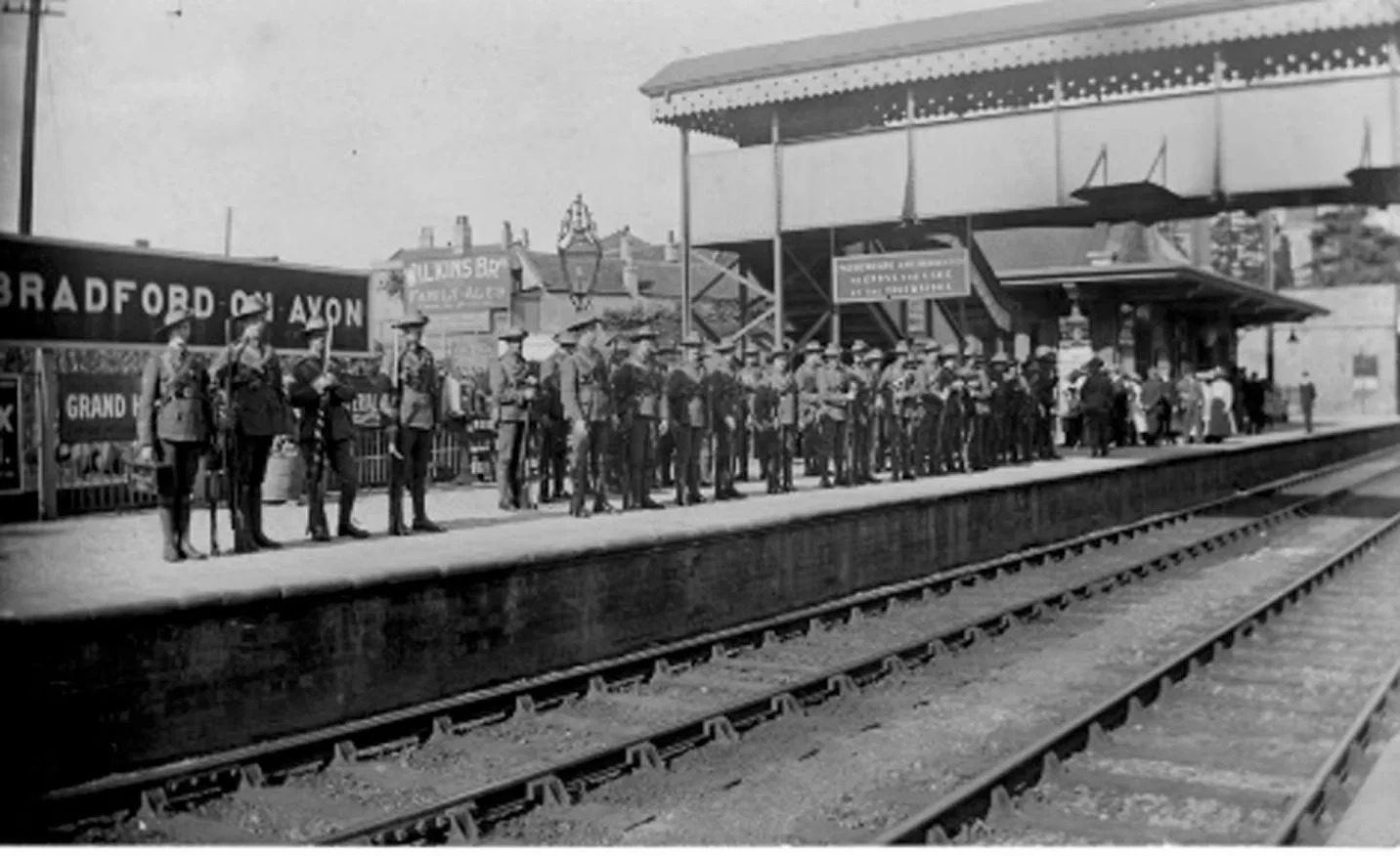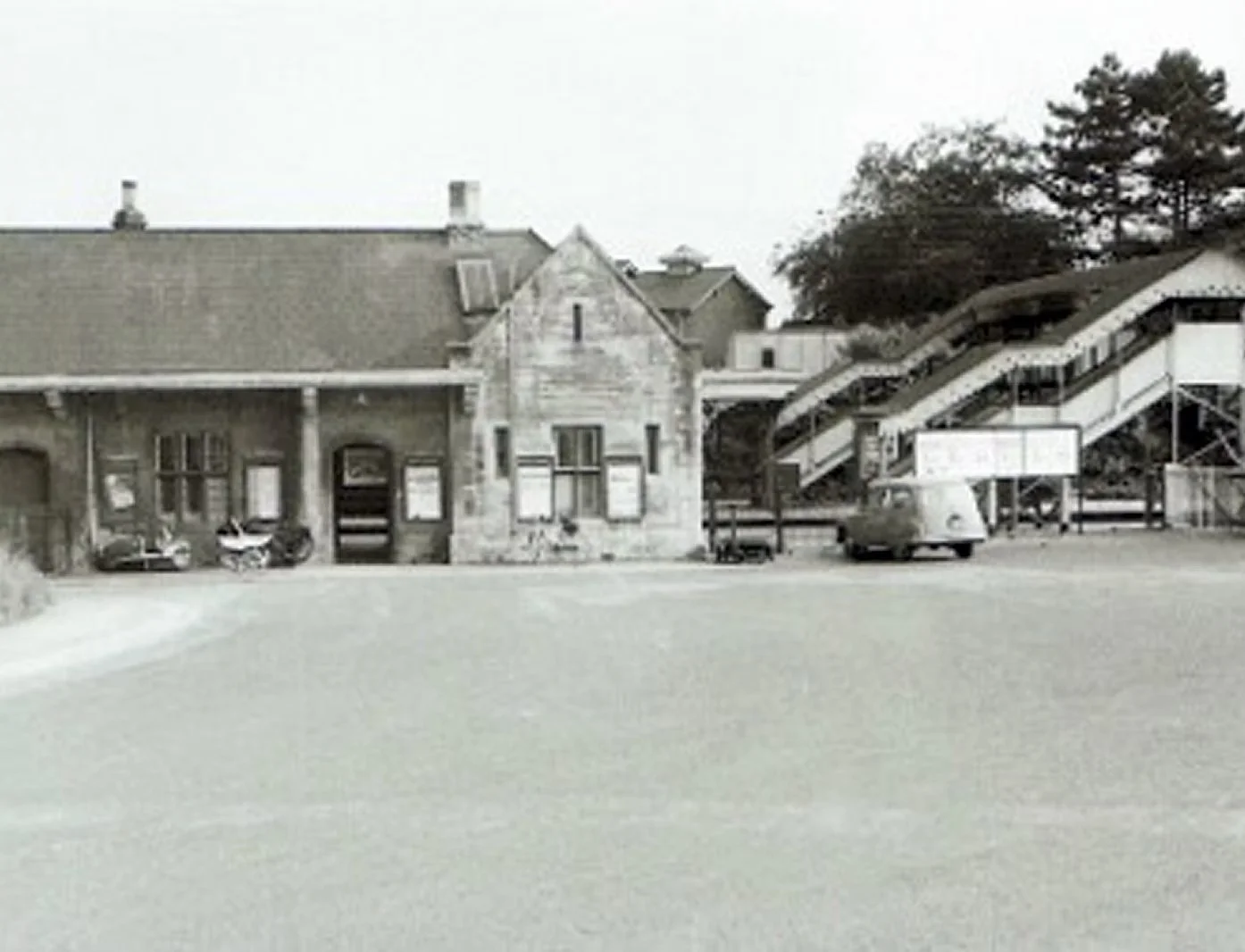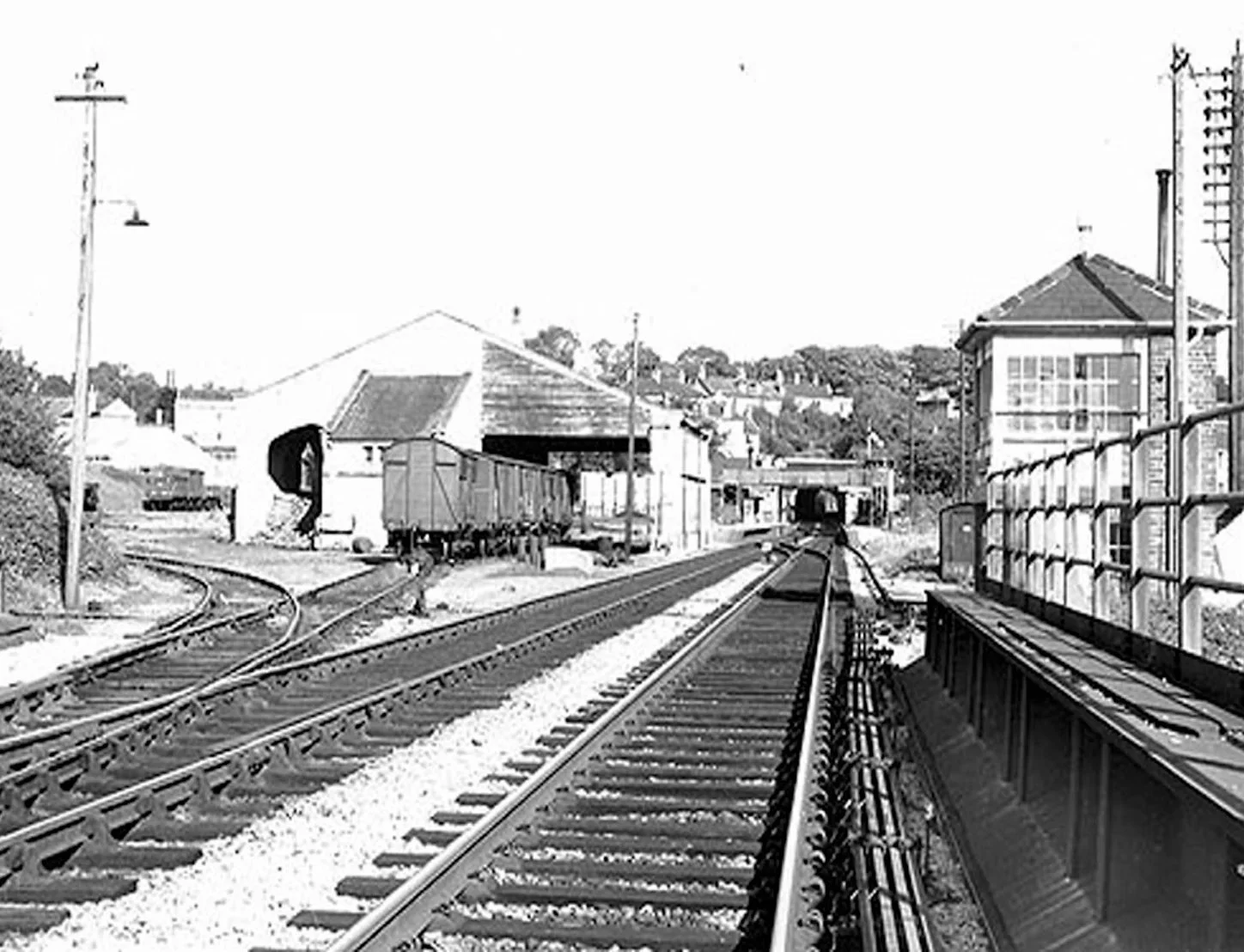Our website is hosted by the Bradford on Avon Preservation Trust website. We are grateful for the assistance of the Preservation Trust to make this happen.
Bradford on Avon Station Footbridge Canopy Project
Restoring the railway footbridge to its former glory
Bradford on Avon already has a 150-year old station to be proud of, a well preserved and rare example of an original Great Western Railway wayside station designed by Isambard Kingdom Brunel. But there is something missing - the canopy over the footbridge, which was removed in 1964.
The project goal is to restore the canopy onto the footbridge and to bring back our station to its former glory.
About us
The project is led by a partnership of local railway enthusiasts and people keen to preserve Bradford on Avon's heritage. All are supporters and users of our railway station with a track record of community involvement.
This is an important heritage project for the town. With the enthusiasm of the community and the added expertise we've identified, the project can succeed. Everyone involved will be proud in the knowledge that their enduring legacy to their community is a completed Brunel wayside station.
What can you do?
Do you want to be involved, to give practical help, a donation or be a vocal supporter? Please send us an email to footbridgecanopy@gmail.com or donate via PayPal.
Registered Charity No. 1184339
Registered Office: Silver Street House, Silver Street, Bradford on Avon, BA15 1JY
-

Lord Faulkner of Worcester
PATRON
Lord Faulkner is a member of Parliament and a life peer. With a passionate interest in railways and railway heritage, Lord Faulkner holds the following rail related positions: President of the Heritage Railway Association, Chairman of the GWR Advisory Board, Deputy Chairman of the Science Museum, President of the Cotswold Line Promotion Group and Chairman of The North Cotswold Line Task Force.
-

David Moss
TRUSTEE
In the 1990s David was Director, Commercial for Railtrack Group plc and then Director General, European Affairs. Before that he had led the UK in civil aviation negotiations with many countries including the USA and in the EU, and had been Chairman of the European Civil Aviation Conference (a UN body based in Paris). In 2000 he retired to Bradford on Avon and from 2004 to 2017 he was Chairman of the Bradford on Avon Preservation Trust.
-

Peter Leach
TRUSTEE
Peter is a keen volunteer and has devoted his time to various activities to promote and protect Bradford on Avon. Peter served as a member of the Bradford on Avon Town Council for 10 years, serving three times as Mayor/Chair of Council. He has been involved in many charity fund-raising activities over the years and is a keen railway enthusiast.
-

John Potter
TRUSTEE
John is a life-long train spotter, he volunteers for the West Somerset Railway. He is a former Mayor of Bradford on Avon and is currently the Chairman of the Preservation Trust.
-

Peter Mann
TRUSTEE
Peter is a retired IT technical and business project manager who has long been interested in industrial heritage, particularly railways. He volunteers once week in the Signals & Telegraph Department on the West Somerset Railway.
-

David Cowles
TRUSTEE
David retired in 2016 having spent 36 years as a Commercial Banker. He is very community based and spent his entire career working in the South West.
-

John Baxter
TRUSTEE
I am a retired local government officer in education forward planning and have been involved in the heritage railway sector since the mid-1970s. I am shortly stepping down from being Secretary to the Heritage Railway Association Operating & Safety, and Boiler Code of Conduct Committees after serving them for over 20 years helping with Guidance Notes preparation and updating. I am the Trust Secretary at the Midsomer Norton heritage railway on the late lamented Somerset & Dorset Railway. At Bradford-on-Avon station, along with a number of volunteers, I look after the station gardens and am responsible for sorting out the finances and grant applications.
Station History
Our goal
Our goal is to reinstate a canopy on the footbridge at the Bradford on Avon railway station. This Grade 2 listed station is a very rare surviving example of a Brunel designed station. The station buildings have been restored in recent years to replace various features which had been lost so they now show accurately what the buildings would have looked liked in the Victorian era. However, the footbridge canopy was removed in the 1960s detracting from the ensemble of the station buildings. Additionally, the installation of a canopy will help preserve the footbridge from the weather.
These two photos show a re-installed canopy almost identical to the one we need.
The footbridge pictured was removed from Trowbridge, the adjacent station to Bradford on Avon. It is almost identical to ours. It was acquired by the West Somerset Railway, a heritage railway.They replaced the canopy and it looks splendid!
Project Progress
As the project progresses we shall keep you up-to-date on this page. Please check back from time-to-time, or follow us on Facebook and get regular updates.
-
We are very pleased to announce that the Bradford on Avon Station Footbridge Canopy Project has received the Approval in Principle Certificate from Network Rail.
This the culmination of many years of hard work by our Architect, Oxford Architects and their contracted specialists, together with the regional Asset Management teams and our Senior Sponsor at Network Rail. We are grateful to all for their skills and perseverance on our behalf. We are also grateful for the continuing support of GWR over the years.
The costs of the design work to date has been met by private local donations plus generous grants from the GWR CCIF and the DfT CRDF, the latter accessed for us by Heather Cullimore at Severnside Community Rail Partnership. We are very grateful to all these funders without whom the Approval in Principle could not have been achieved.
We are now looking forward to organising a budget to enable us to complete the final stage of the design, to enable us to go to tender.
Thank you for your continuing support. We will keep you up to date as we reach project milestones.
-
The Design Stage which we started in Q3 2022 has reached a major milestone with the delivery to Network Rail of the completed documentation applying for Approval in Principle (AiP). The documentation we have submitted consists of the so-called Form A’s which are the Network Rail templates for providing all the necessary design information and drawings to enable Network Rail Asset Managers to review the whole design. With the Form A’s go all the technical drawings, the electrical drawings including lighting simulations, a detailed description of materials and a description of how we plan to go about the physical installation without interfering with passenger movements across the footbridge.
We now await a response from the Network Rail Asset Managers. We know they are very busy and our project is one of many on their desks to review, but we hope that with all the groundwork we have laid with Network Rail over many months and years, that the review of our submission can be conducted quickly.
We are keeping our key funder for this design project, the Community Rail Development Fund (CRDF), fully updated with all progress as we are very aware of the closeness of the deadline set by CRDF for the completion of this design phase. We remain very grateful for the support of CRDF and look forward to being able to report to them that Network Rail have granted AiP and therefore the CRDF grant has been well spent.
-
We have some more great news! We are thrilled to be able to announce that we have been awarded a significant grant from the Community Rail Development Fund (CRDF), which Community Rail Network administers on behalf of the Department for Transport (DfT). Our application was organised and submitted on our behalf by the Severnside Community Rail Partnership. We would like to thank Severnside for helping us to make sure that everything was done correctly. The CRDF grant is £22,000; this will part fund the next stage of the design, to achieve Agreement in Principle (AiP) under the new Network Rail project process PACE (Project Acceleration in a Controlled Environment).To put this next stage of design work into context, the design stages which we have achieved so far include a feasibility study, a technical review of the site including a site survey of underground services, an engineering report on the condition of the footbridge to confirm its ability to take the load of the new canopy, together with discussion with Network Rail on the materials to be used to meet their stringent safety and maintenance requirements. All this work enabled the production of a Design & Access Statement which formed the core of our application to Wiltshire Council for Planning Permission which was granted in Q1 2022. The next stage of work, which the CRDF grant has now part funded, will be to take the design to a sufficient level of detail which will demonstrate that the project will be constructed to the standards required by Network Rail, enabling them to grant Approval in Principle. Once Approval in Principle has been granted, the final design stage will follow - the production of an approved ready for construction design which will enable us to go out to tender and confirm a price for fabrication and installation. A condition of the CRDF grant is that is must be spent and this element of the design project be completed by the end of March 2023, Therefore, in coordination with our sponsor at Network Rail, we are now moving as fast as possible to put together a Basic Asset Protection Agreement (BAPA) for signature, and to brief our architects, Oxford Architects, to begin design work once we have received the Requirements Document from Network Rail. This is expected before the end of September.
We thank the CRDF for this significant boost to our project. We would also like to take this opportunity to acknowledge past financial assistance from GWR's Customer and Communities Improvement Fund (CCIF), the significant donations from local supporters, and the continuing management support from Network Rail, which have all contributed to keeping the momentum going to reinstall the canopy on our Victorian footbridge, and thus reinstating the original Grade 2 listed Brunel station ensemble.
-
We have some great news. Our planning application, which provided a recommended outline using steel and timber, has been approved! Our project will now move into the detailed design phase. At the end of this phase, once the completed design has been approved by Network Rail, we will be able to go out to tender. While the reinstatement of this sort of canopy has been done many times now on heritage railways, it is notable that this will be the first time that such an undertaking has been done on the live, operational national railway network. As a result, this project will require detailed project management and communications with both Network Rail and GWR. Oxford Architects, who put together the outline design, will now complete the detail design for us. Oxford Architects are Network Rail approved architects and have over many years delivered a large number of listed and historically interesting station projects and have work with the Railway Heritage Trust.
-
Significant progress has been made recently with our application for Planning Permission to install the canopy. We made lengthy, detailed investigations in order to find the correct materials to be used as we want to make it as close as possible to the original. This has involved much liaison with consultants, Network Rail and our architects. With the COVID-19 situation, everything has taken longer than we would have liked. The roof of the canopy was originally constructed of corrugated iron. We thought it would be straightforward to use modern corrugated steel but we couldn't find a company in the UK who could press corrugated steel into the correct shape. However, we finally found a steel company in Italy who can create the necessary profile using old-fashioned heritage steel pressing techniques.
Another problem was how to re-create the original timber tongue and groove side panels on the footbridge stairs. These had been replaced in the 1970s by using point rodding as upright stanchions but Network Rail will not accept ordinary timber due to its relatively short life. We found a type of wood treated to give it an extended life of up to 50 years and when painted with fire resistant paint it can be used for the stair side panels and the daggerboards, the pointed decorative wood details which project down from the canopy.
The consultation period for our application runs until the 11th of February 2022. The deadline for the decision is the 2nd of March. Once Planning Permission has be granted, we will move on to complete the final stages of the design. At that point, we will be able to go to tender, and once we have submissions in response, we will know the costs of fabrication and installation.
-
We’ve reached another important milestone with the submission by our architects Oxford Architects of a Listed Building Consent Application to Wiltshire Council Planning Department. The associated Design & Access Statement can be found here.
A key aspect of our latest design thinking is that we now propose the use of GRP (Glass Reinforced Plastic) for the new canopy. This is as a result of extensive research by our engineering consultant David Redfern and Oxford Architects which has confirmed that we cannot now get corrugated steel moulded into precisely the very tight curve at the ridge to match the original. The old GWR were able to do this by making their own standard canopies in bulk, whereas we would now have to get a one-off specially tooled up for us at great cost.
At the same time, detailed investigations have shown how very good the latest GRP methodology is in terms of visual authenticity, (as well as durability and maintainability). The new canopy will be moulded to look exactly like the original corrugated metal. GRP is used extensively by Network Rail when replacing life-expired station canopies and associated wooden dagger boards, which has proved that GRP can replicate exactly the original whilst needing little or no maintenance. We continue to work closely with the Railway Heritage Trust as we have throughout the project, and they have confirmed that they would "support the use of GRP/FRP if it's done well”. The RHT commissioned a report into the use of GRP/FRP for canopy fascias and they "encourage its use where appropriate”, so we will be studying this report closely.
On a further piece of news, after further discussions with Network Rail about what would need to be done to enable us to install the new canopy without interfering with the live railway or passengers crossing the footbridge, Network Rail have decided to conduct a new structural survey of the footbridge to see if they feel they will need to do any work on it in the medium term. This would be with a view to a consideration that if they decide they do need to do work, then perhaps this could be planned to coincide with getting the canopy back on. This would particularly help us if this meant that Network Rail would bear the cost of organising alternative walking routes for the duration of the work. We are very grateful to Network Rail for this helpful suggestion and we await the outcome of the survey with interest.
-
Even though the country may be in lock-down, we are continuing to make progress.
At the end of February our architects Oxford Architects completed the first stage of the replacement canopy design and submitted a formal Report in the GRIP 3 format required by GWR and Network Rail. As a result GWR were able to release the second tranche of their generous grant from their Customer and Communities Improvement Fund.
(The GRIP Report formats are the Network Rail methodology for managing third party projects on the national network. GRIP stands for Governance for Railway Investment Projects).
The GRIP 3 Report has also been submitted to Network Rail and the Railway Heritage Trust, so that all our key stakeholders are fully up to date with progress. Our mentor at Network Rail subsequently convened a telephone conference meeting between ourselves and the Network Rail Asset Protection Project Manager to review the report and decide on next steps. As a result of a very useful discussion, Network Rail were able to confirm their continued support, and it was agreed that we should plan to move on to the next design stages, which will complete the design, prepare technical documentation and send invitations to tender to contractors. (In the GRIP terminology this will be GRIP 4 & 5). But before we do that, Network Rail will hold internal discussions to agree what their costs are likely to be for their management time to assess and approve the plans.
-
We are a registered charity.
Lord Faulkner of Worcester has agreed to be our Patron.
Conducted four years of investigative work, including acquiring a copy of the original design drawings for the canopy
Engaged an experienced independent engineering consultant with wide-ranging railway experience.
Had visits and inspections by Network Rail engineers and fabrication engineers.
Commissioned an independent professional engineering report by a Network Rail approved company into the suitability of the bridge to take a new canopy. We are happy to report, the bridge passed the test with flying colours!
We are working with Network Rail, who own the footbridge:
The first window of opportunity for the installation of the canopy is 2021.
We are looking into entering a service agreement with them.
A topographical survey was completed in early November.
Costs:
We don't yet know the final total of the project costs but:
Producing the design and going to tender will cost between £35,000 and £40,000. This includes Network Rail management time.
The fabrication and installation costs are yet to be determined.
Funds to date:
The Great Western Railway Customer and Communities Improvement Fund has generously committed £15,000 towards the first stage of the design. THANK YOU!
Another £20,000 has been raised including donations from a private individual and Bradford on Avon Secret Gardens. THANK YOU!
The Railway Heritage Trust have committed, in principle, to cover 40% of the fabrication and installation costs once the design is approved.
Contact
Footbridge Canopy Project
Silver Street House
Silver Street
Bradford on Avon
BA15 1JY
Email: footbridgecanopy@gmail.com
We would love to hear from you. If you have any questions, ideas, comments or would like to get involved please send us an email. We will get back to you as soon as we can.
Privacy statement for the Footbridge Canopy Project.
Registered Charity No. 1184339





